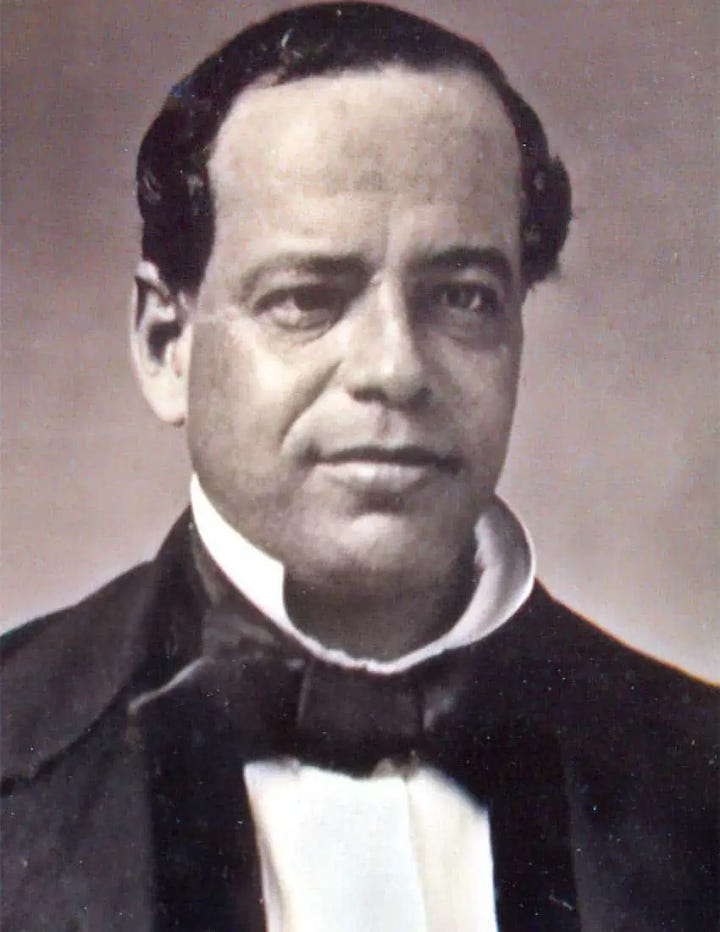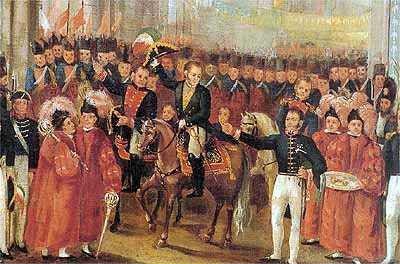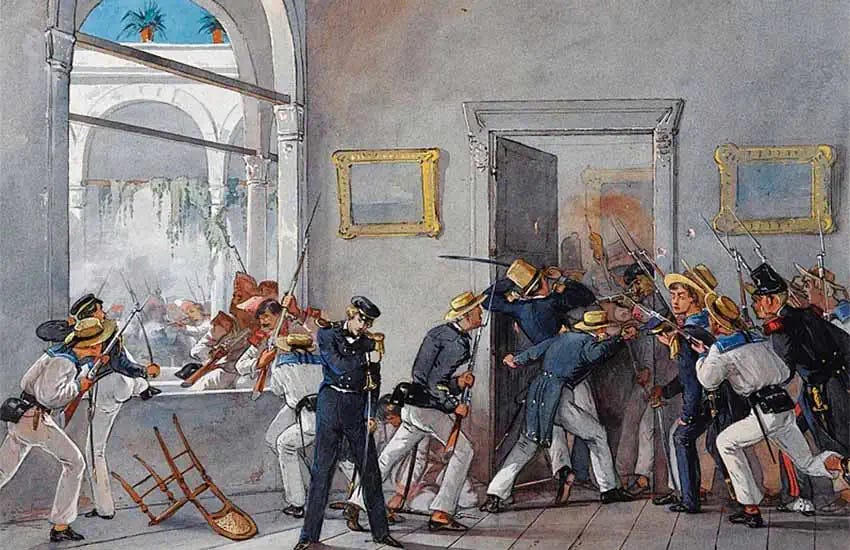When France Invaded Mexico Over a Bakery Bill
Post-Independence Mexico: A Recipe for Instability
Some wars begin with assassination attempts, territorial disputes, or religious differences. And then there's the time France invaded Mexico because someone broke into a bakery. Yes, really. The "Pastry War" of 1838-1839 stands as perhaps history's most absurd international conflict. One moment a French chef is lamenting his looted pastry shop; the next, warships are bombarding Mexican ports. No slight is too small when national pride and colonial ambitions are at stake.
To understand how crumbs led to cannonballs, let's examine the setting. By 1838, Mexico had been independent from Spain for less than two decades—a period marked by significant political volatility. The young nation had cycled through eleven different presidencies as federalists and centralists battled over how to build a nation from colonial remnants.
The economy was in shambles: mining production had declined significantly, manufacturing struggled against European imports, and by 1837, Mexico's foreign debt had reached approximately 50 million pesos with defaulted British loans creating international tensions.
Meanwhile, across the Atlantic, France under "Citizen King" Louis-Philippe was aggressively expanding its global influence. Foreign Minister Louis-Mathieu Molé pursued an assertive policy toward nations that threatened French economic interests, aligning with a broader European shift toward economic imperialism in the Americas.
While the Monroe Doctrine discouraged direct colonization, commercial dependencies offered an alternative form of control. The British had already established substantial interests in Latin America, and France, eyeing Mexico's Gulf Coast ports, was determined not to be left behind in this new form of empire-building.
The Incident: Let Them Eat Nothing
Enter Monsieur Remontel, a French pastry chef who had established a bakery in Tacubaya, a suburb of Mexico City. In 1832, during the Arista-Moctezuma revolt against President Bustamante, Mexican officers allegedly looted Remontel's shop, helping themselves to both the pastries and fixtures. Apparently, revolutionary fervor works up quite an appetite.
Rather than pursue justice through Mexican courts (which, given the political chaos, presented significant challenges), Remontel returned to France and petitioned King Louis-Philippe's government for compensation. He claimed damages of 60,000 pesos—an amount that would have made Marie Antoinette choke on her cake. This sum represented roughly the annual salary of 40 high-ranking Mexican officials, a startlingly ambitious valuation for a suburban bakery, especially given his inventory listed "fixtures of the finest mahogany" and "imported porcelain serving pieces" seemingly incongruous with such an establishment.
Remontel's claim wasn't the only one France had against Mexico. Baron Antoine-Louis Deffaudis, France's minister to Mexico, had been compiling grievances since 1835, including the murder of a French businessman, unpaid loans, and various property damages. But it was the bakery incident that captured diplomatic attention and eventually gave the conflict its deliciously absurd name.
From Croissants to Crisis: The Diplomatic Breakdown
The French government, seizing upon this pastry predicament as a convenient pretext, compiled a list of grievances against Mexico, totaling 600,000 pesos. When President Anastasio Bustamante's government refused to pay, French diplomacy quickly soured. Mexican Foreign Minister Cuevas proposed international arbitration, arguing that foreign residents should first seek redress through Mexican courts—a standard procedure of the era.
Baron Deffaudis rejected these approaches with all the flexibility of a stale baguette. In March 1838, he delivered an ultimatum from aboard the French warship Herminie: pay the full 600,000 pesos within three weeks, or face a blockade. Mexico, with its economy already struggling, refused. National pride was at stake, and the demand seemed less like diplomacy and more like extortion with a French accent—"Your money or your ports, s'il vous plaît!"
As Mexican newspapers rallied public opinion against this foreign intimidation, Baron Deffaudis departed the country in frustration. Foreign Minister Molé, back in Paris, recommended military action—a dramatic escalation from what had begun as a dispute over pastries.
When Bakers Go to Battle: The French Blockade
In April 1838, a French fleet under Admiral Charles Baudin established a naval blockade of all Mexican ports on the Gulf of Mexico. The squadron included six warships—essentially deploying the 19th century equivalent of sending a SWAT team to collect on a parking ticket. Against this modern European fleet, Mexico could muster only a handful of aging ships, most in such poor repair they were less "navy" and more "creative driftwood arrangement."
The economic impact was severe. With customs duties constituting most of Mexico's government revenue, the blockade effectively strangled the nation's finances. By November, negotiations had stalled, and France intensified pressure by bombarding the fortress of San Juan de Ulúa in Veracruz with innovative shell guns designed by Henri-Joseph Paixhans—technology that Mexico couldn't match. The fortress's walls, previously considered formidable, crumbled under the new French weaponry, forcing surrender within hours.
After capturing the fortress, French marines landed in Veracruz itself on December 5. The situation took another turn when General Antonio López de Santa Anna—yes, the same Santa Anna who had led Mexican forces at the Alamo just two years earlier—came out of retirement to defend his country. During an engagement with French landing parties, Santa Anna was wounded by grapeshot, resulting in the amputation of his leg. Despite his injury, Santa Anna arranged for his amputated leg to receive a ceremonial burial with its own monument—perhaps the only time in military history where a body part received better retirement benefits than most soldiers. This unusual footnote adds another layer of peculiarity to an already bizarre conflict.
As the fighting intensified and neither side gained a decisive advantage, diplomatic intervention became increasingly necessary.


The British Step In: Would You Like Tea With Those Pastries?
As the conflict threatened regional trade, Great Britain offered to mediate. Britain, as Mexico's largest trading partner and holder of the majority of Mexico's foreign debt, saw its business interests disrupted by the blockade. Richard Pakenham, the British minister to Mexico, facilitated negotiations between French and Mexican officials, convincing Mexico that continued resistance would likely lead to further French military action while reminding France that prolonged conflict might damage its standing among other Latin American nations.
On March 9, 1839, Mexico agreed to pay the 600,000 pesos in installments over six years, allowing the Mexican government to present it as a negotiated settlement rather than capitulation. The treaty also contained provisions guaranteeing future protection for French citizens in Mexico and most-favored-nation trade status for France—provisions arguably more valuable than the monetary settlement, revealing the broader commercial aims of French policy.
The resolution reflected the power imbalance of the conflict. Mexico agreed to pay the substantial sum (apparently in the 1830s, armed robbery was perfectly acceptable if you had enough ships). France secured its financial and commercial objectives, satisfied that international law had been upheld and pastry-related justice served. Meanwhile, Santa Anna, despite losing both the military confrontation and a significant percentage of his person, managed to enhance his reputation as a patriotic defender.
The Lasting Taste: Aftermath and Legacy
The Pastry War, despite its comical name, established a concerning precedent with significant consequences. For France, it demonstrated how military pressure could extract concessions from weaker nations—a lesson they applied two decades later during the 1861-1867 Intervention when they attempted to install Maximilian I as emperor of Mexico. For Mexico, the conflict highlighted its vulnerability to European powers, and the financial strain of the indemnity payments contributed to its difficulties in the subsequent Mexican-American War of 1846-1848.
The conflict's cultural memory reveals its asymmetrical impact: in Mexico, the "Guerra de los Pasteles" endures as a symbol of foreign intervention and national resilience, while in France, it's barely a footnote in military history. Yet this absurd confrontation serves as an instructive case study in how international conflicts often diverge from their stated causes, with economic interests frequently masquerading as moral imperatives.
Behind the grand narratives of international relations, the Pastry War reminds us that conflicts often arise from mundane concerns—property, profit, and occasionally, pastry. It illustrates how newly independent states struggled in a world still dominated by colonial powers, and how easily nations can transition from diplomatic disagreements to military action when power imbalances exist. And regardless of how trivial the cause might appear, the consequences of armed conflict remain serious—even when it's named after dessert.






